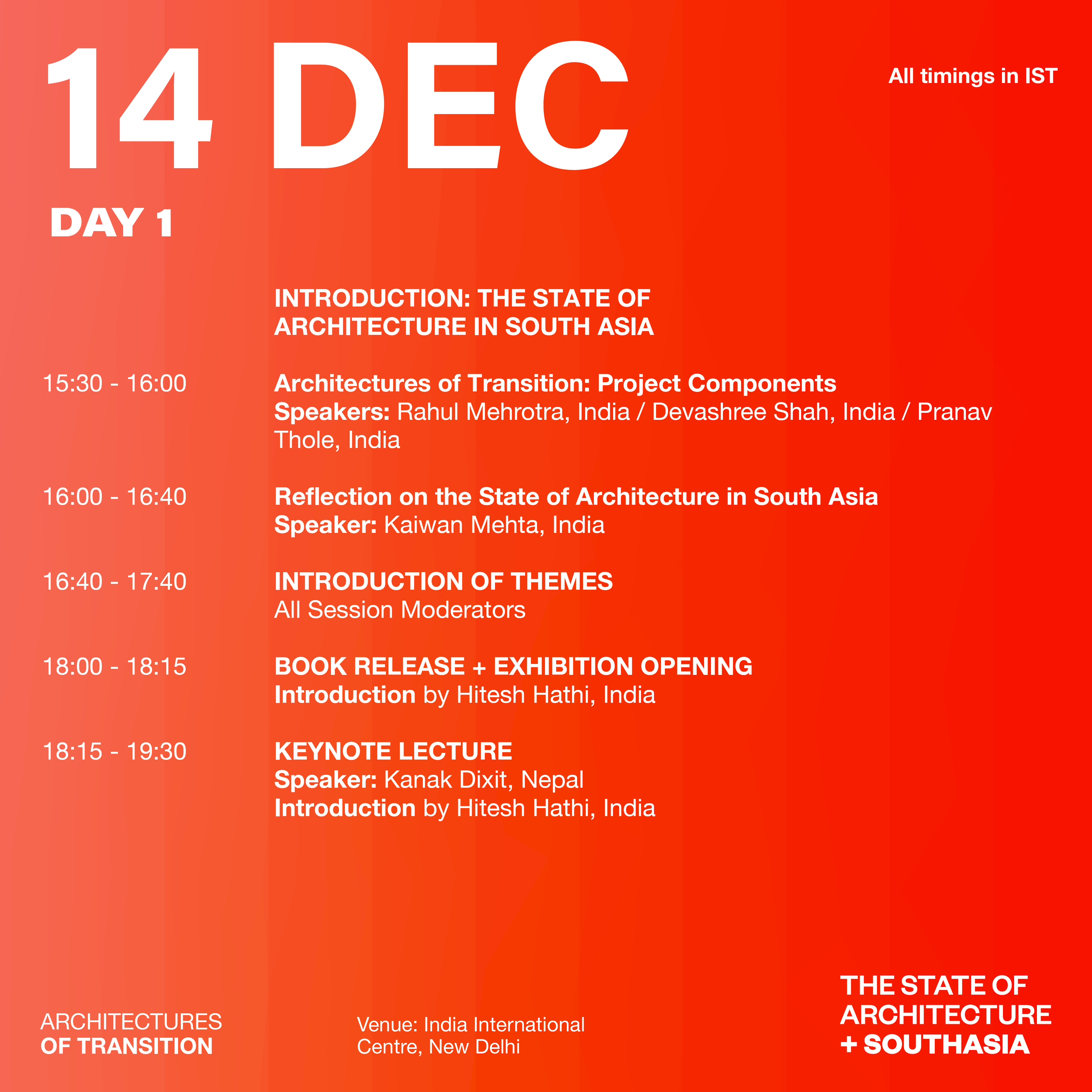Architectures of Transition
This project aims to collectively ask, across South Asia, the question: Does Architecture matter in a state of transition? In the region, numerous transitions, and uncertainties, encompassing climate change, political transformations, and socio-economic shifts, manifest in a heightened form within the daily existence of its populace. We believe this collective question will not only resonate across the different countries in the region, but these gathered reflections will be mutually productive given the incredible common ground we historically and culturally share. What does the practice of architecture in the region mean for the next generation? For the making of the architect and architectural education? Can architecture address the abject inequity that surrounds us in South Asia? What does practice mean for women architects in South Asia?
While some questions are broad, common, and defy political boundaries, some physical implications and manifestations of Architecture are extremely local. So, what are the differences, and what are the similarities? What are the new forms of patronage for Architecture emerging across South Asia? How is Architecture made relevant in circumstances like South Asia, where uncertainty and unpredictability are pervasive? Often, Architecture tends to gravitate towards absolute solutions and thus, the question becomes: How do we engage with the design of transitions? What is the agency of Architecture in grappling with transitions? What are the Architectures of Transition?
These and many such questions are what the State of Architecture in South Asia project hopes to explore while focusing specifically on Architecture in the public realm and on the question of the public agency of architecture.






